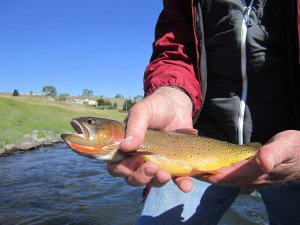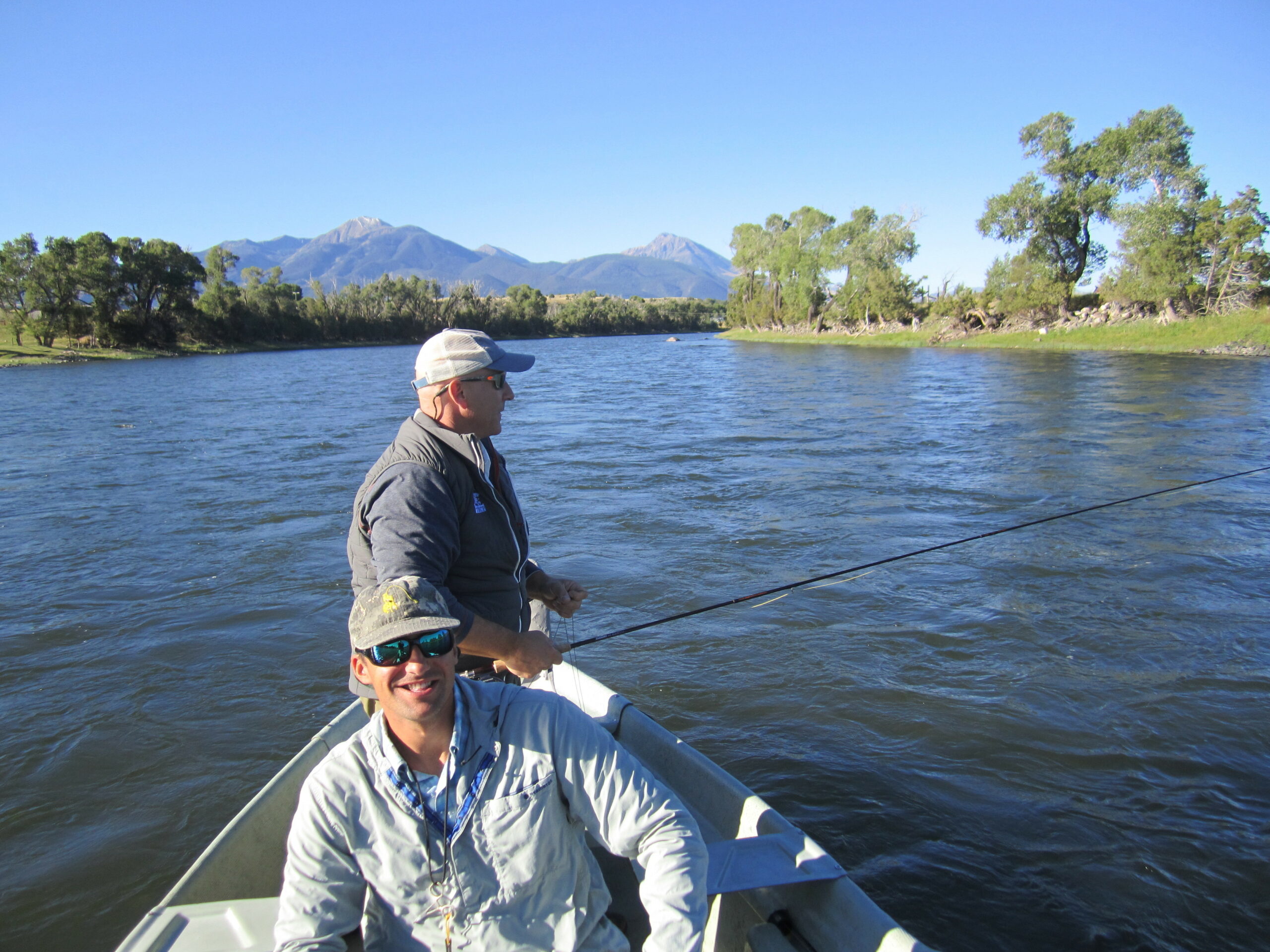Paradise Valley is aptly named. Flowing north from Yellowstone National Park, the Yellowstone River runs strong and cold through a broad valley dividing the Absaroka and Gallatin mountains. Elk and grizzly bears roam the high country. Three species of trout dwell in the river, including native cutthroats. The Yellowstone is a world-class fly-fishing destination.
Paradise Valley is such a special place that very wealthy people have bought up much of the available land, creating an exclusive paradise. Trophy homes overlook the river, but the rich don’t own the water. Anyone possessing a Montana fishing license can enjoy fishing the Yellowstone River, including me.

Last week, I floated and fly-fished on the Yellowstone, fulfilling a long-held dream to do just that. The morning excursion was part of the Theodore Roosevelt Conservation Partnership’s Western Media Summit, which was focused on protecting the West’s public lands and the hunting and fishing they provide. After spending two days listening to speakers and taking notes (you’ll learn more about the summit in future columns) the fishing trip was proof positive of the value of public lands or, in this case, public access to an outstanding trout stream.
Ed Arnett, TRCP’s chief scientist, was my fishing companion. Our guide and captain of the drift boat was Matt Arnesen, a former Minnesotan who went to Montana for the skiing and never looked back. While I’ve fished with guides on a few occasions, this was a new experience for me. Matt provided everything and even changed flies and untangled my line. Call it a full-service fishing trip.
We drifted about an eight-mile stretch. On our way to the river, Matt called to arrange a shuttle so his vehicle would be waiting at our take-out point. The cost was $25. Considering the popularity of fly-fishing in Montana, the shuttle service must do brisk business.
When we pushed off, Matt explained that we would be fishing along the banks, where feeding trout are often found. We fished with two flies; the second fly attached by a short length of line tied to the bend of the hook on the first. Matt started us with a floating dry fly and a tiny, sinking nymph as the second fly. When no trout rose to our dries, he changed us to a large nymph followed by a tiny one. Then he clipped a small bobber on the line where the fly line met the leader.
This was easy fishing. Matt rowed the drift boat so it moved at the same speed as our bobbers floating in the current. He kept us about 25 feet or less from the river bank, so the casting was easy. All we had to do was drift along and wait for the bobber to go down. It wasn’t long before Ed said, “I’ve got a fish.” Moments later, Matt slid the landing net under a 10-inch mountain whitefish, which he subsequently unhooked and released.
A mountain whitefish looks like a smaller, sleeker version of the lake whitefish found in many northern Minnesota lakes. While mountain whitefish often strike flies, they get little respect from trout anglers. Oddly, a near relative, the grayling, is prized by fly anglers. Whatever. I enjoy catching mountain whitefish simply because they don’t exist in my home waters.
Ed landed three whitefish before I caught my first. We continued catching them as we drifted along, but the trout eluded us. The three of us swapped fish stories. When Ed and Matt complained about how crowded Montana’s famed trout rivers have become, I must admit to feeling smug. I often go fishing on the North Shore and encounter no one at all.
On this morning, though, we had the Yellowstone to ourselves. We drifted and fished amid a stunning mountain backdrop and an impossibly blue sky. We passed a handful of trophy homes, but it was a far cry from the suburbanized shorelines you see on many Minnesota lakes. We saw a mule deer doe and fawn, and a trio of golden eagles. As we neared a long bend in the river, Matt rowed into shore and changed us to dry flies with a nymph dropper.
“We should find some cutthroats along this bend,” he explained.

The Yellowstone River has brown and rainbow trout, both introduced from elsewhere long ago, as well as native cutthroats. I’ve always had a soft spot for cuts, as I do for the North Shore’s native brook trout. On a slow day such as this, I’d be happy to catch a brown or rainbow. But landing a cutthroat would be the icing on an already sweet cake.
We started down the bend, following Matt’s instructions to cast right up to the bank. I watched a trout rise for my fly and then missed the strike.
“Wait a little longer before you strike,” Matt advised.
So I did, or thought so, anyway, and missed a second strike. Some folks say the third time is a charm. I say it was a good thing I had a guide. Matt said, “You’ve got one” just as I felt a tug on the fly rod. I hadn’t seen the strike. At any rate, dumb luck and good guide iced my cake. Soon I was admiring a colorful Yellowstone cutthroat before releasing it back in the river. My morning on the Yellowstone was complete.
The cutthroat turned out to be the only trout we caught on our morning float. As the sun climbed higher in the sky, even the whitefish action slowed down. But the scenery and the company remained spectacular. We talked about everything from bats (Ed is an expert on the tiny critters) to bird hunting (he knows a thing or two about that subject, too). Knowing that we had to return to our hotel for afternoon sessions, Matt delivered us to the take out at exactly the right time. Thanks to the shuttle service, his vehicle was already there. It was a perfect morning. Maybe that’s why they call the place Paradise.



